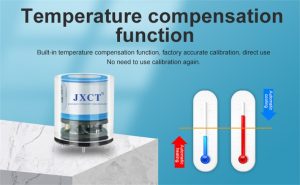Indoor air quality (IAQ) is a critical aspect of our overall well-being, as we spend a significant amount of time indoors. Poor IAQ can lead to various health issues, including allergies, respiratory problems, and even long-term illnesses. To address this concern, the use of gas sensors has emerged as an effective solution for monitoring and enhancing indoor air quality. In this article, we will explore the role of gas sensors in promoting health and well-being by ensuring optimal IAQ.
Understanding Indoor Air Quality:
Indoor air quality refers to the level of cleanliness and healthiness of the air within enclosed buildings, including homes, offices, schools, and other indoor spaces. Several factors contribute to IAQ, including pollutants, humidity levels, temperature, and ventilation. Poor IAQ can result from a variety of sources, such as outdoor pollutants, building materials, cleaning products, and human activities.
The Role of Gas Sensors:
Gas sensors are devices designed to detect and monitor the presence of gases in the air. They play a crucial role in assessing IAQ by detecting harmful gases and pollutants that may be present indoors. Gas sensors are capable of identifying various gases, including carbon dioxide (CO2), carbon monoxide (CO), volatile organic compounds (VOCs), and radon. By continuously monitoring these gases, gas sensors provide valuable data that allows for timely interventions to maintain optimal IAQ levels.
Monitoring Carbon Dioxide Levels:
One of the primary functions of gas sensors in promoting IAQ is measuring carbon dioxide levels. High concentrations of CO2 can lead to fatigue, decreased cognitive function, and headaches. Gas sensors equipped with CO2 detectors monitor and alert occupants when CO2 levels exceed recommended thresholds. This information allows individuals to take corrective measures, such as increasing ventilation or taking breaks outside, to improve IAQ and ensure a fresh and healthy working or living environment.
Detecting Carbon Monoxide:
Carbon monoxide is a colorless and odorless gas that can be extremely dangerous. It is produced by fuel-burning appliances, such as gas stoves, furnaces, and fireplaces. Gas sensors with CO detectors are essential in detecting the presence of carbon monoxide and triggering alarms to alert occupants of potential danger. This early detection capability can save lives by providing sufficient time for evacuation and preventing carbon monoxide poisoning.
Monitoring Volatile Organic Compounds (VOCs):
Volatile organic compounds are emitted as gases from various sources, including cleaning products, paints, carpets, and furniture. Prolonged exposure to high levels of VOCs can lead to respiratory issues, allergies, and other health problems. Gas sensors equipped with VOC detectors continuously monitor the levels of these chemicals in indoor air. Early detection of elevated VOC levels allows occupants to address the source of contamination or take appropriate measures to minimize exposure, leading to improved IAQ and better health outcomes.
Radon Detection:
Radon is a naturally occurring radioactive gas that can seep into buildings through cracks in the foundation. Prolonged exposure to high levels of radon can significantly increase the risk of lung cancer. Gas sensors with radon detectors play a crucial role in monitoring radon levels and alerting occupants when concentrations exceed safe limits. By taking prompt action, such as sealing cracks or installing ventilation systems, individuals can effectively mitigate the risks associated with radon exposure and maintain a healthier indoor environment.
Aiding Ventilation Strategies:
Proper ventilation is essential for maintaining good IAQ by ensuring a constant supply of fresh outdoor air and reducing the concentration of indoor pollutants. Gas sensors provide valuable data on pollutant levels, CO2 concentrations, and humidity, enabling occupants to optimize their ventilation strategies. This may involve adjusting the operation of mechanical ventilation systems or simply opening windows to allow for natural airflow. By utilizing gas sensors to guide ventilation decisions, individuals can create a healthier and more comfortable indoor environment.
Integration with Smart Building Systems:
Gas sensors can be integrated into smart building systems that allow for centralized monitoring and control of IAQ. These systems collect data from gas sensors, along with other environmental sensors, to provide real-time information on IAQ conditions. Additionally, they can automatically adjust ventilation rates, trigger alarms, or send notifications to building occupants or facility managers when IAQ parameters deviate from desired levels. This integration enhances the overall effectiveness and efficiency of maintaining optimal IAQ in buildings.
Conclusion:
Enhancing indoor air quality is crucial for promoting health and well-being in both residential and commercial spaces. Gas sensor
 : +86 155 8830 2704
: +86 155 8830 2704 : jxdziot@gmail.com
: jxdziot@gmail.com
